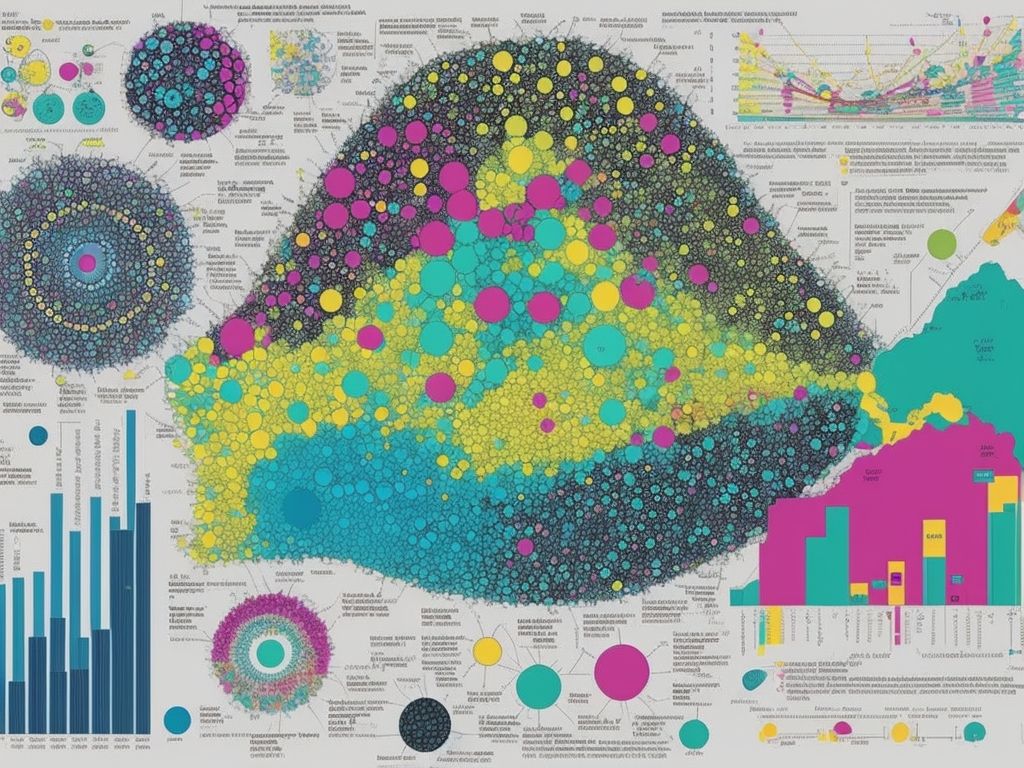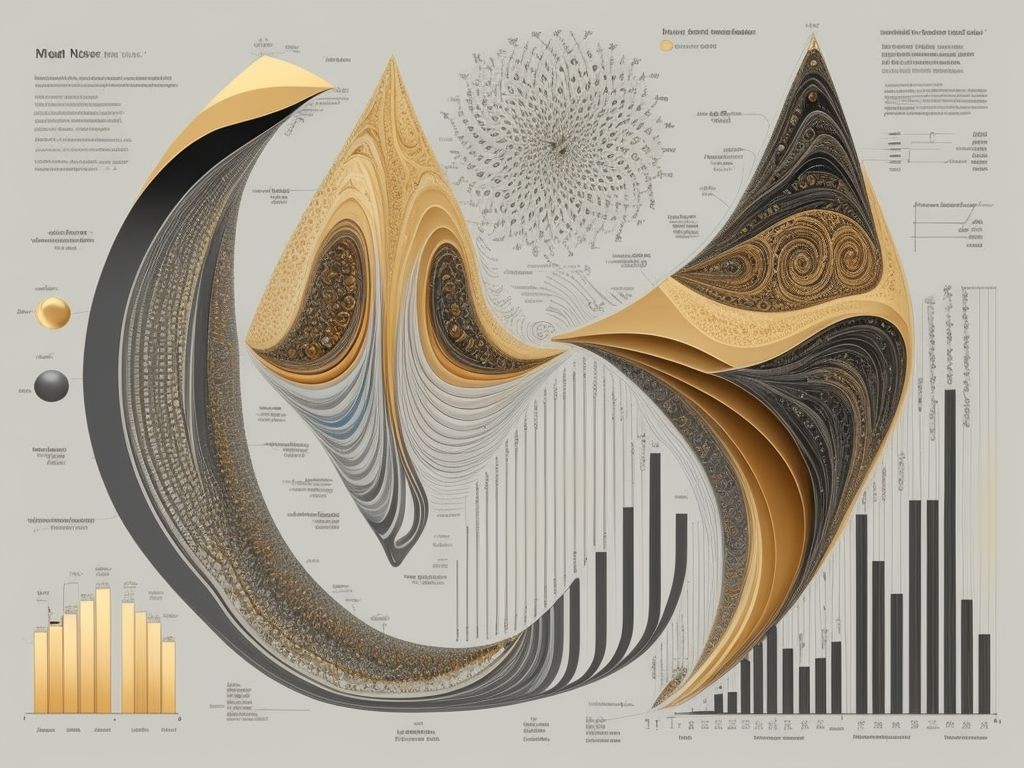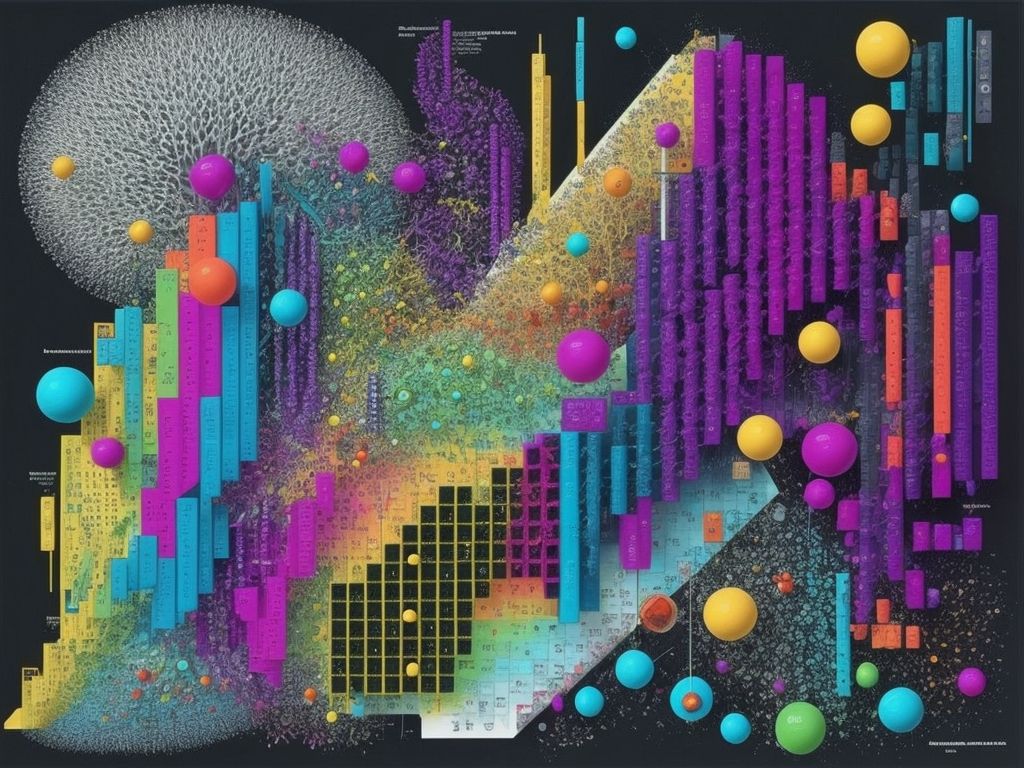Identifying Outliers in Statistics
Statistics are very important in many areas, helping to figure out what is going on. One thing to look at is outliers. If not identified, they can affect the results of data analysis and lead to wrong conclusions.
Outliers are values that are very different from the others. They might appear due to incorrect data collection or simply be unusual. It is essential to locate them as they can change statistical analysis results.
There are several ways to identify outliers. Box plots visualize data and show what is outside the typical range. Z-scores measure distance from the average.
For instance, a study of income in different regions revealed an individual whose income was much more than others. Further investigation showed it was a business tycoon who was staying there temporarily. Without noticing the outlier, the results of the study would have been wrong.
In conclusion, understanding outliers is key for good statistical analysis. Various methods like box plots and z-scores can help discover those extreme values. Careful consideration of outliers can lead to reliable results.
What are outliers in statistics?
Outliers are data points that differ from the rest of a dataset. They can change statistical measures like mean and standard deviation, leading to skewed results. These extreme values are usually seen as errors.
When studying data, it is essential to identify outliers. Reasons for their occurrence can be mistakes, machine errors, or rare events. They can change the overall pattern of the data and impact statistical modeling and decision-making.
To detect outliers, statisticians use box plots, z-scores, and measuring data points outside a certain range. Once identified, they can be studied to discover their cause and determine if they should be removed or kept.
Not all outliers need to be removed. Some can provide insights into unique phenomena and important info that may lead to discoveries.
Fun fact: John Tukey coined the term ‘outlier’ in 1977 in his book ‘Exploratory Data Analysis.’ He changed statistical thinking by encouraging people to examine data graphically and not just with numerical summaries.
Importance of identifying outliers
Identifying outliers is key in stats for understanding data properly and making sure analysis is precise. Outliers are extraordinary values that contrast hugely with most of the data points, and can have a major effect on statistical assessments and results.
- Accurate Analysis: Spotting outliers helps get accurate and dependable statistical analysis.
- Data Quality: Outliers can point to mistakes or anomalies in data gathering techniques, which can influence the whole dataset’s quality.
- Genuine Insights: By noticing outliers, we can divide uncommon perceptions from the regular pattern, leading to more important and practical insights.
- Improved Forecasting: Taking out or dealing with outliers assists with improving forecasting models by cutting down the effect of extreme values on future predictions.
- Precision in Decision-making: Outliers can contort statistical measures, such as mean or standard deviation, influencing decision-making processes. Acknowledging and managing them appropriately guarantee accuracy in decision-making.
- Anomaly Detection: Spotting outliers helps in spotting abnormal behavior or events at an early stage, making it possible to intervene and stop potential issues in time.
Still, it’s important to understand not all outliers are errors; some could be real abnormalities. So, it’s essential to know the context and nature of data before considering removing them.
Methods for identifying outliers
As you explore stats, it’s key to spot outliers – data points that differ from the rest. Doing so can give you clues about errors or peculiarities that may otherwise go undetected. Here, we’ll take a look at some useful techniques for finding these outliers.
The z-score method is common. It involves finding the standardized value of each data point in relation to the dataset mean and standard deviation. Data points that are outside a certain threshold, usually 2 or 3 standard deviations, are outliers.
The interquartile range method bases itself on the range between the upper quartile (75th percentile) and the lower quartile (25th percentile). Outliers are points below Q1 – 1.5*IQR or above Q3 + 1.5*IQR.
The modified z-score method accounts for skewness in the data. It finds a modified z-score with robust estimators like median absolute deviation (MAD). Outliers exceed the set threshold.
Box plots visually show outliers. Regression analysis looks at residuals to find outliers. Clustering techniques flag observations far from cluster centers.
Research methods for outliers have changed as stats has advanced. In the past, researchers relied on visual inspection and intuition to find them manually. Now computer technology and algorithms make detection more precise and objective.
Example of outlier detection using each method
Outliers are data points that are quite different from the rest of the dataset. For understanding the true patterns and trends, detecting these outliers is a must. We can use numerous methods that can be applied for outlier detection. Let’s check the results of each method.
The Z-Score method records the number of standard deviations a data point is away from the mean. Similarly, the Interquartile Range (IQR) method identifies outliers based on their distance from the first and third quartiles.
Mahalanobis Distance measures the distance between each observation and the center of a distribution. K-Means Clustering also helps in detecting outliers by identifying data points belonging to clusters with a small number of members.
It’s essential to note that the results vary depending on the dataset and requirements. So, it is advisable to use multiple techniques to make sure comprehensive outlier detection.
To analyze statistical data accurately, detecting outliers is key. With the help of Z-Score, IQR, Mahalanobis Distance, K-Means Clustering, and Local Outlier Factor, one can gain valuable insights. Don’t miss out on discovering hidden patterns and anomalies! Use outlier detection techniques!
Pros and cons of each method
In the field of statistics, each outlier identification method has its own pros and cons. Let’s take a closer look at them.
We can observe these in a table showing the pros and cons of each:
| Method | Pros | Cons |
|---|---|---|
| Z-score method | Robust against non-normal distributions Simple to interpret results |
Sensitive to extreme values Assumes data is normally distributed |
| IQR method | Resistant to extreme values Works well with skewed distribution |
Lacks precision in detecting outliers Different interpretations due to varying thresholds |
| Mahalanobis distance method | Accounts for correlations among variables Reliable results even for non-normal data distributions |
Sensitive to multi-collinearity issues Needs estimation of covariance matrix for accurate results |
| Tukey’s fence method | Easy to use on large datasets Detects mild and extreme outliers |
Limited accuracy in detecting moderate outliers Boundary determined based on fixed thresholds |
| RANSAC methodology | Robustness against noise and irrelevant data points User-friendly approach with automation through algorithms |
None |
Before beginning outlier identification, it’s important to understand the characteristics of the data and choose the most suitable method. This will give accurate results and help make good decisions.
By examining the pros and cons of each outlier identification method, people can choose the right one based on their needs. Bear in mind that no single method is ideal in all cases, so flexibility and consideration are essential for successful outlier analysis.
Best practices for identifying outliers
Outliers are essential in stats for precise data study and interpretation. Applying the best practices will help discover these oddities and make intelligent decisions based on solid info.
– Study visuals: Graphs and charts can aid in recognizing outliers quickly. Scatter plots and boxplots are particularly good at indicating exceptional values.
– Familiarize with the context: Before marking a data point as an outlier, it is critical to comprehend the context in which it appears. It could be a valid study or give useful insights about the fundamental phenomenon.
– Employing statistical methods: Numerous statistical methods, like standard deviation or z-scores, can be used to spot outliers. These techniques enable researchers to measure the distance from the mean and decide if a data point is notably different from the others.
– Think of domain knowledge: In some cases, domain knowledge is a crucial part of identifying outliers. Professionals in the field can provide valuable insights that differentiate between genuine outliers and errors in data collection or measurement.
Outlier detection needs focus and an even approach. It requires analyzing visuals, using statistical methods, contemplating contextual elements, and taking advantage of domain expertise to guarantee accurate interpretation.
True History:
Back in 1965, John Tukey, a British statistician, coined the term “outlier” while studying robust statistics. His research revolutionized the way we detect and manage extreme values that heavily influence statistical analyses. Even today, Tukey’s contributions keep inspiring the approaches we use in various fields to handle outliers.
Conclusion
Wrapping up our analysis on outlier identification in statistics, here are the key points:
- Outliers can distort results and affect interpretation.
- Visual inspection, statistical tests, and mathematical modeling can detect outliers.
- MAD and Tukey’s fences are good for finding outliers.
- Context is key for deciding if an outlier should be kept or removed.
- Outliers could contain vital information, or be genuine anomalies.
It’s important to use outlier detection methods wisely, as the right approach depends on the data and research goals.
Let me give an example. In a study of income disparity, a city had abnormally high salaries. On closer look, the outlier was caused by high-income professionals moving to the area. Without detecting and understanding this outlier, conclusions about income would have been wrong.
To conclude, by noting the impact of outliers and using proper detection methods, researchers can draw accurate conclusions and sidestep potential issues in their studies.
Frequently Asked Questions
1. What is an outlier in statistics?
An outlier in statistics is a data point that significantly deviates from the rest of the data. It is an observation that lies an abnormal distance from other values in a random sample from a population.
2. Why is it important to identify outliers?
Identifying outliers is important because they can greatly impact the results of statistical analyses. Outliers can skew the averages, standard deviations, and other measures of central tendency, leading to misleading conclusions. By identifying outliers, we can better understand the distribution and behavior of the data.
3. How can outliers be identified?
There are several methods to identify outliers. One common approach is to use the z-score, which measures how many standard deviations a data point is away from the mean. Another method is the boxplot, which visually displays the distribution of data and highlights any extreme values. Outliers can also be identified using statistical tests, such as the Dixon’s Q test or Tukey’s range test.
4. Should outliers always be removed from the data?
Not necessarily. The decision to remove outliers depends on the specific context and objectives of the analysis. In some cases, outliers may represent valuable or valid data points that provide insights into rare events or exceptional circumstances. However, if outliers are the result of measurement errors or data entry mistakes, it might be appropriate to remove them to avoid biasing the analysis.
5. How can outliers affect statistical analysis?
Outliers can have a significant impact on statistical analysis. They can distort measures of central tendency, such as the mean or median, leading to inaccurate interpretations of the data. Outliers can also affect correlation coefficients, regression models, hypothesis tests, and other statistical techniques. Therefore, it is important to consider outliers when conducting any statistical analysis.
6. Are there any automated tools to identify outliers?
Yes, there are several software packages and programming libraries that offer automated methods for identifying outliers. These tools use various algorithms and statistical techniques to detect outliers in datasets. Some popular tools include R, Python libraries like Pandas and NumPy, and commercial software like JMP and SPSS.











